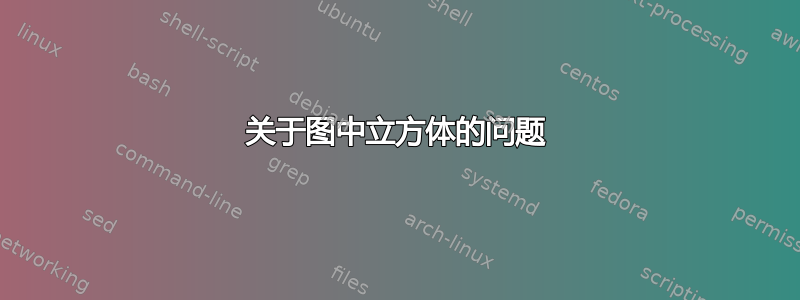
答案1
你可以利用tikz-3dplot包可轻松绘制立方体。下图中,我绘制了一个不完整的解决方案,但您可以轻松完成其余部分。
\documentclass[border={10}]{standalone}
\usepackage{tikz}
\usepackage{tikz-3dplot}
\usetikzlibrary{calc}
\begin{document}
\tdplotsetmaincoords{80}{125} % perspective angles
\begin{tikzpicture}[tdplot_main_coords]
\coordinate (O) at (0,0,0);
\draw[dashed] (O) -- (4,0,0);
\draw[dashed] (O) -- (0,8,0);
\draw[dashed] (O) -- (0,0,4);
%draw the top and bottom of the cube
\draw[fill=blue!5] (O) -- (0,2,0) -- (2,2,0) -- (2,0,0) -- cycle;
\draw[fill=red!5 ] (O) -- (0,2,0) -- (0,2,2) -- (0,0,2) -- cycle;
\draw[fill=red!5 ] (O) -- (0,0,2) -- (2,0,2) -- (2,0,0) -- cycle;
\draw[fill=red!5 ] (0,0,2) -- (0,2,2) -- (2,2,2) -- (2,0,2) -- cycle;
\draw[fill=red!5 ] (2,2,2) -- (2,2,0) -- (2,0,0) -- (2,0,2) -- cycle;
\draw[fill=red!5 ] (0,2,2) -- (2,2,2) -- (2,2,0) -- (0,2,0) -- cycle;
\node (A) at (2,1,1) {\Huge A};
\draw[very thick, ->] (1,2,1) -- node[midway,above] {$P_{1}$} ( 1,3.3,1);
\draw[fill=blue!5] (0,4,0) -- (0,4,2) -- (2,4,2) -- (2,4,0) -- cycle;
\draw[fill=blue!5] (2,4,0) -- (2,4,2) -- (2,6,2) -- (2,6,0) -- cycle;
\draw[fill=blue!5] (2,6,2) -- (2,6,0) -- (0,6,0) -- (0,6,2) -- cycle;
\node (A) at (2,5,1) {\Huge B};
\end{tikzpicture}
\end{document}




